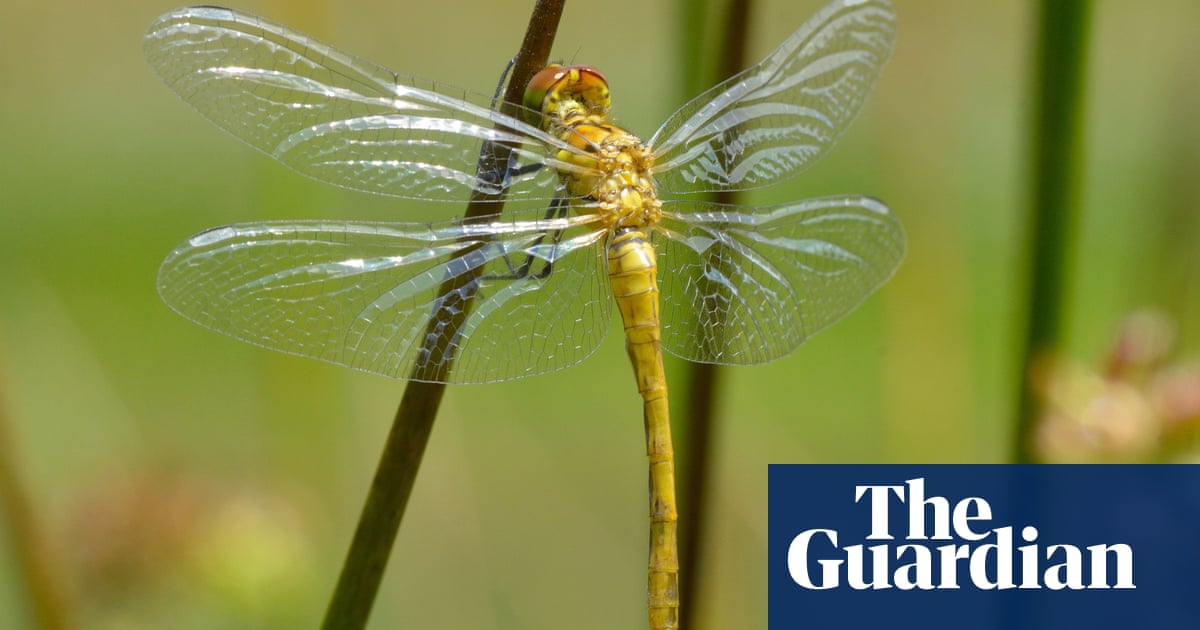A rare dragonfly is no longer considered endangered after spreading its wings across England, but conservationists have said its wetland habitat is still at risk from climate breakdown.
The Norfolk Hawker, known for its bright green eyes and golden body, went extinct from the Cambridgeshire Fens in 1893 and became confined to east Norfolk and east Suffolk. It is thought this was caused by the draining of its preferred habitat of ponds and marshes for agriculture over the centuries. It has since been almost entirely restricted to the Norfolk Broads.
In recent years, however, the dragonfly has been found in Cambridgeshire, Kent and Herefordshire. The populations at these locations have become stable, and scientists have declared that due to its wider population spread, and the appearance of strongholds across parts of the country, it is no longer endangered.
This is the best summary I could come up with:
A rare dragonfly is no longer considered endangered after spreading its wings across England, but conservationists have said its wetland habitat is still at risk from climate breakdown.
The BDS has said climate breakdown may have contributed to its expansion beyond Norfolk and Suffolk, with warmer temperatures causing it to go north and west of its previous limits.
Dr Pam Taylor, the convenor of the BDS dragonfly conservation group, said: “Although the Hawker’s overall range has expanded greatly, there are still huge gaps in its current distribution.
The State of Dragonflies in Britain and Ireland 2021 report showed that upland and heathland species had faced the most noticeable declines, particularly in England, and climate was believed to be the main cause.
The Broads Authority environment policy adviser Andrea Kelly said: “What appears to be good news about the spread of the Norfolk Hawker, and its potential relisting as no longer endangered, is in fact a call to action about the significant threats to its precious wetland habitat.
“The only way to ensure no further species loss is to continue to protect and restore its current wetland and fen habitats in the broads and across East Anglia.”
The original article contains 516 words, the summary contains 196 words. Saved 62%. I’m a bot and I’m open source!



